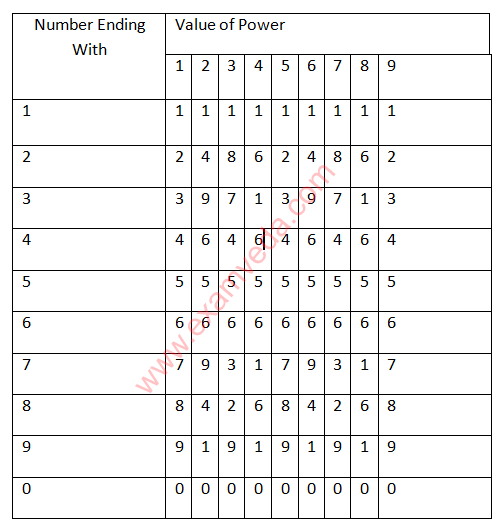Unit Digit theorem
Unit digit theorem is just extension of Remainder Theorem but the change is that you always need to divide given expression by 10 to find its unit digit. On the logic of remainder theorem, the unit’s digit of an expression will be taken by getting the remainder when the expression is divided by 10.
For example, If we have to find the unit digits of the expression:
(17 × 22 × 36 × 54 × 27 × 31 × 63)
We just try to find the remainder when the whole expression is divided by 10.
$$\frac{{17 \times 22 \times 36 \times 54 \times 27 \times 31 \times 63}}{{10}}$$ ==R==> $$\frac{{7 \times 2 \times 6 \times 7 \times 1 \times 3}}{{10}}$$ ==R==> $$\frac{{14 \times 24 \times 21}}{{10}}$$ ==R==> $$\frac{{4 \times 4 \times 1}}{{10}}$$ ==>R==> $$\frac{{16}}{{10}}$$ ==R==> 6.

Note
When any expression is divided by 10, it gives unit digit of expression. And whenever any expression is divided by 100, it gives last two digit. In same way to find last three digits of an expression you need to divide the given expression by 1000 and so on.


Join The Discussion